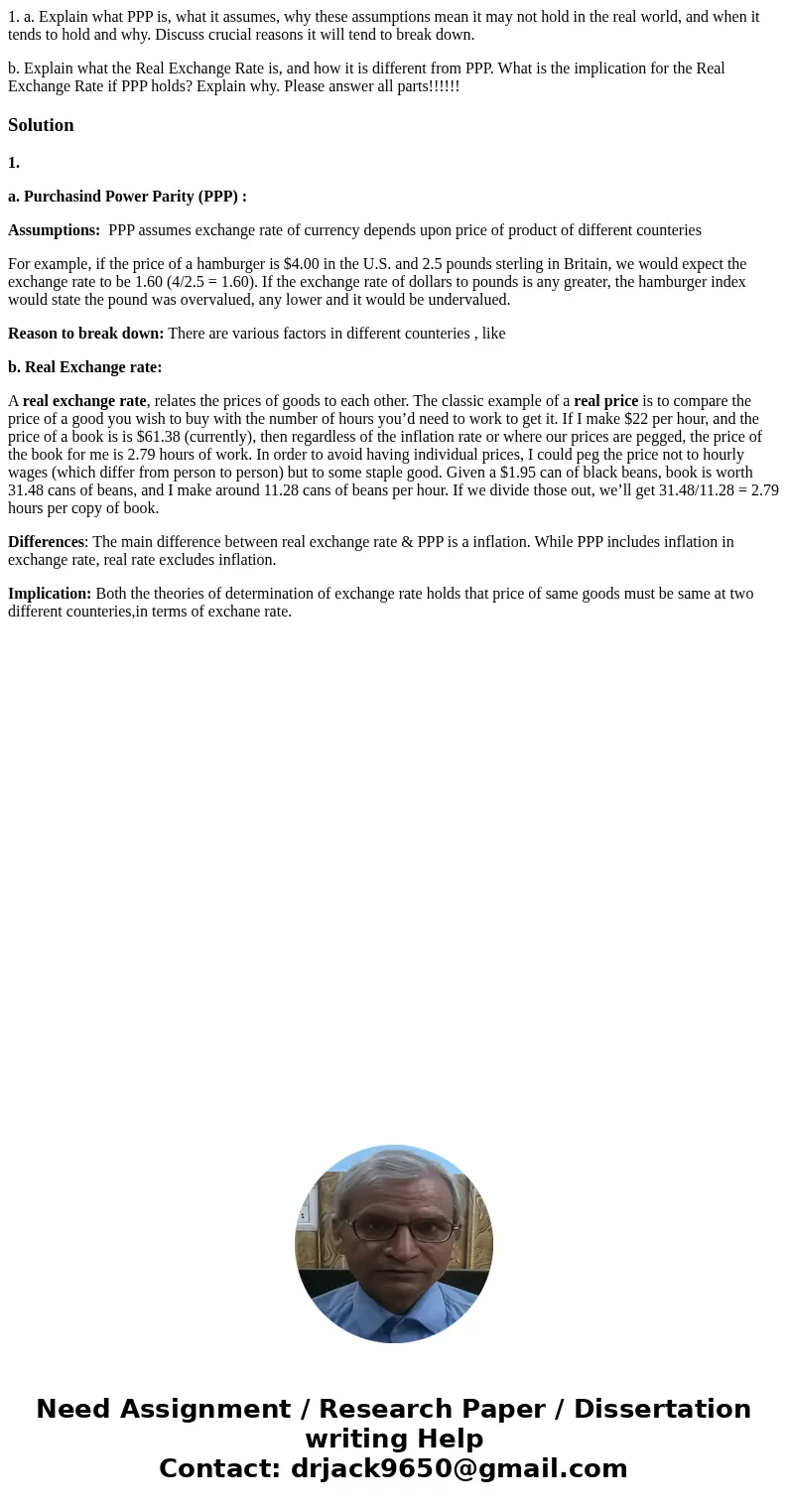1 a Explain what PPP is what it assumes why these assumption
1. a. Explain what PPP is, what it assumes, why these assumptions mean it may not hold in the real world, and when it tends to hold and why. Discuss crucial reasons it will tend to break down.
b. Explain what the Real Exchange Rate is, and how it is different from PPP. What is the implication for the Real Exchange Rate if PPP holds? Explain why. Please answer all parts!!!!!!
Solution
1.
a. Purchasind Power Parity (PPP) :
Assumptions: PPP assumes exchange rate of currency depends upon price of product of different counteries
For example, if the price of a hamburger is $4.00 in the U.S. and 2.5 pounds sterling in Britain, we would expect the exchange rate to be 1.60 (4/2.5 = 1.60). If the exchange rate of dollars to pounds is any greater, the hamburger index would state the pound was overvalued, any lower and it would be undervalued.
Reason to break down: There are various factors in different counteries , like
b. Real Exchange rate:
A real exchange rate, relates the prices of goods to each other. The classic example of a real price is to compare the price of a good you wish to buy with the number of hours you’d need to work to get it. If I make $22 per hour, and the price of a book is is $61.38 (currently), then regardless of the inflation rate or where our prices are pegged, the price of the book for me is 2.79 hours of work. In order to avoid having individual prices, I could peg the price not to hourly wages (which differ from person to person) but to some staple good. Given a $1.95 can of black beans, book is worth 31.48 cans of beans, and I make around 11.28 cans of beans per hour. If we divide those out, we’ll get 31.48/11.28 = 2.79 hours per copy of book.
Differences: The main difference between real exchange rate & PPP is a inflation. While PPP includes inflation in exchange rate, real rate excludes inflation.
Implication: Both the theories of determination of exchange rate holds that price of same goods must be same at two different counteries,in terms of exchane rate.

 Homework Sourse
Homework Sourse